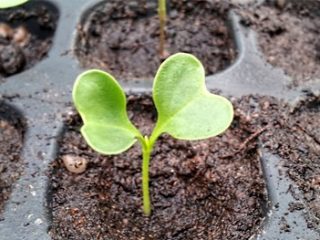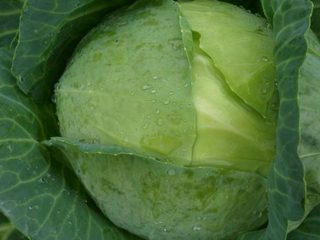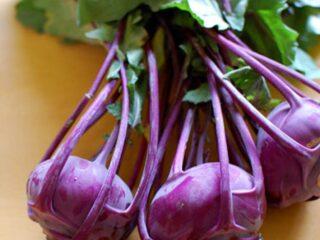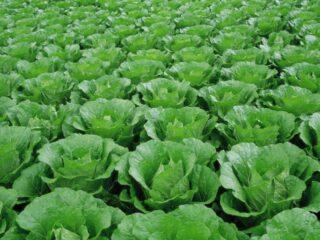Content
- 1 Main principles of crop rotation
- 2 The effect of cabbage on the soil
- 3 What is better to plant after cabbage next year?
- 3.1 Is it possible to plant cucumbers after cabbage?
- 3.2 Is it possible to plant tomatoes after cabbage?
- 3.3 Is it possible to plant peppers after cabbage?
- 3.4 Is it possible to plant onions after cabbage?
- 3.5 Is it possible to plant carrots after cabbage?
- 3.6 Is it possible to plant zucchini after cabbage?
- 4 What not to plant after cabbage
- 5 Advice on agricultural technology
- 6 Conclusion
Experienced gardeners know that crop rotation is extremely important for a good harvest. Therefore, it is necessary to plan in advance the movement of plants on the site, which guarantees the high productivity of each of them. Cabbage is especially popular among gardeners. Moreover, many of them grow several of its species in their garden plots. Therefore, you need to know that you can sow next year after cabbage, since failure to follow the order will cause poor results.

Cruciferous vegetables need to be grown in a new area every year.
Main principles of crop rotation
Since ancient times, it has been noticed that growing one crop on a plot for several years significantly depletes the soil. As a result, the yield decreases, which leads to unproductive cultivation.
And only by observing crop rotation can you maintain high plant productivity for the next year, as this allows you to rationally use the nutritional components found in the soil. After all, the needs of different cultures for substances are different. By choosing the right predecessors, you can ensure that the yield will be high in one area every year.
The effect of cabbage on the soil
To know what you can grow after a crop, you need to understand what effect it has on the soil. This vegetable is characterized by a long growing season. And only with sufficient nutrition does it form large heads of cabbage. Therefore, first of all, the vegetable needs nitrogen, which it takes from the soil in large quantities.
It should be taken into account that the plant forms a powerful root system, the length of which is 40-100 cm. This means that the cruciferous crop leaves behind depleted soil for the entire length of its underground part.
To understand which vegetables are best to harvest after, you also need to take into account common pests and diseases. After all, many larvae and pathogens remain overwintering in the ground. This means that the plants planted in this area will also be subject to attack next year. But correct crop rotation will eliminate the possibility of negative influence of pests and pathogenic microflora on the cultivated crops.
What is better to plant after cabbage next year?
When choosing a crop to grow on your plot for the next year, you need to consider two basic rules.First of all, vegetables should not have the same diseases and pests. Otherwise, you shouldn’t count on a good harvest. The second condition is that the need of the subsequent crop for nutritional components, which will grow on the site next year, must be radically different from its predecessor.

It is recommended to alternate crops with different growing season durations
Is it possible to plant cucumbers after cabbage?
After cruciferous vegetables in the garden, it is not only possible, but also necessary to remove cucumbers for the next year. This is due to the fact that this crop does not require a high content of nutrients in the soil. Therefore, even after heading a vegetable, cucumbers are able to fully develop and produce a good harvest.
And if you apply fertilizing during the active growing season, then an excellent result is guaranteed.
Is it possible to plant tomatoes after cabbage?
Tomatoes can also be planted the following year after cruciferous vegetables. They develop especially well in the area where early varieties of cabbage vegetables grew. It is important that the area is well lit during the day and protected from cold gusts of wind.
But before planting tomatoes for next year, you need to prepare the bed in the fall. To do this, you need to dig it up and add humus at the rate of 5 kg per square meter. m. It is also recommended to additionally add 30 g of superphosphate and 25 g of potassium sulfide for the same area size.
Is it possible to plant peppers after cabbage?
Pepper is considered a demanding vegetable, but after cruciferous vegetables it develops well and produces a high yield the following year.To do this, you just need to properly prepare the bed. The area needs to be dug up in the fall and 300 g of slaked lime added per square meter. m. This will normalize the acidity level after cruciferous vegetables.
Is it possible to plant onions after cabbage?
Onions show high performance in beds where a lot of organic matter was added to the previous crop. Therefore, it can be planted after cruciferous vegetables next year. And the most optimal option for crop rotation is carrots. Nightshades, zucchini, and cucumbers can also be used as precursors for onions.
Is it possible to plant carrots after cabbage?
Taking into account the rules of crop rotation, after the forks you can also cultivate carrots for the next year. For this root crop, there are enough nutritional components in the soil for full development. However, it must be taken into account that the cabbage plant and carrots have common pests and diseases.
Therefore, before planting, it is recommended to water the bed with Aktara solution, and after a week with Previkur Energy. This will disinfect the soil and increase the chances of getting a high harvest next year.
Is it possible to plant zucchini after cabbage?
You can also plant zucchini, but only after early and mid-ripening varieties. These types of cruciferous vegetables do not deplete the soil so much, which allows for high vegetable productivity next year.
Before planting zucchini, you need to prepare the area. To do this, you need to dig it up in the fall and add 10 kg of humus per square meter. m. It is also additionally recommended to add 30 g of superphosphate and 15 g of potassium sulfate.

It is not recommended to plant zucchini, squash and pumpkins after late varieties of cabbage vegetables next year
What not to plant after cabbage
You need to know not only the vegetables that can be grown after cabbage, but also those that are strictly not recommended to be planted after it. Only in this case can you avoid mistakes in crop rotation next year.
You cannot plant:
- cruciferous;
- beets;
- leguminous plants;
- garden strawberries.
Advice on agricultural technology
Compliance with the rules of agricultural technology increases the chances of obtaining a high yield. Therefore, you need to study them in advance.
Advice from experienced gardeners:
- If it is not possible to observe crop rotation due to the small size of the plot, it is necessary to plant green manure after harvesting. The best of them are annual lupine, beans, sainfoin, soybeans, lentils, seradella, and peas.
- To repel pests during the season, mixed plantings of cabbage vegetables with marigolds are recommended.
- Cruciferous crops can only be returned to the site after three years.
- The close proximity of cruciferous vegetables to celery is unacceptable, since the latter attracts the attention of white butterflies.
Conclusion
After cabbage, many crops can be planted next year, which allows for rational use of the site. To do this, you only need to know the need of different vegetables for nutritional components so that they can fully develop after their predecessors. And then high performance is guaranteed.








